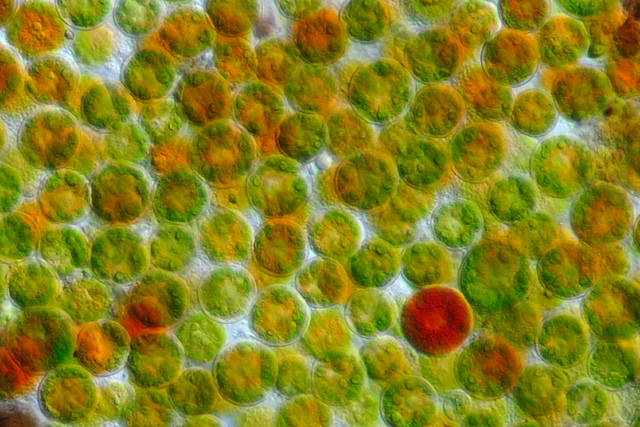
Profile
- Latin Name: Haematococcus Pluvialis
- CAS No.: 472-61-7
- Active Ingredient: Astaxanthin
- Specifications: 1%, 2%, 3%, 5%, 10%
- Test Method: UV-Vis
- Appearance: Dark red powder
Description
Haematococcus pluvialis is a freshwater species from the family Haematococcaceae. This species is well known for its high content of the strong antioxidant called Astaxanthin, which is important in aquaculture, and cosmetics. The high amount of Astaxanthin is present in the resting cells, which are produced and rapidly accumulated when the environmental conditions become unfavorable for normal cell growth. Examples of such conditions include bright light, high salinity, and low availability of nutrients. Haematococcus pluvials is usually found in temperate regions around the world. Astaxanthin is a keto-carotenoid. It belongs to a larger class of chemical compounds known as terpenes.
Astaxanthin is classified as a xanthophyll (originally derived from a word meaning “yellow leaves” since yellow plant leaf pigments were the first recognized of the xanthophyll family carotenois). Like many carotenoids, astaxanthin is a colorful, lipid-soluble pigment.
Astaxanthin is found in microalgae, yeast, salmon,trout, krill, shrimp, crayfish and crustaceans. It provides the red color of salmon meat and the red color of cooked shellfish.
Astaxanthin unlike several carotenes and one other known carotenoid, is not converted to vitamin A (retinol) in the human body. Like other carotenoids, astaxanthin has self-limited absorption orally and such low toxicity by mouth that no toxic syndrome is known.
Benefits
- Goods antioxidant, increasing the flexibility of capillaries and reducing injury;
- Function of anti-radicalization and anti-aging:
- Prevention of cardiovascular diseases;
- Enhancing immunity.

